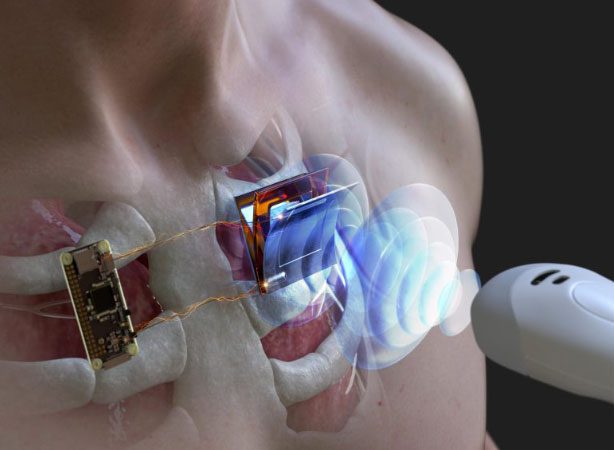A research team from the Korea Institute of Science and Technology (KIST) has discovered a way to charge pacemakers and other implantable devices in the human body using acoustic waves, eliminating the need for surgical procedures as previously required.
Pacemakers are currently regarded as effective devices for supporting patients with arrhythmias, helping them maintain a stable heart rhythm.

Illustration of charging a pacemaker using acoustic waves – (Image: Korea Institute of Science and Technology)
However, pacemakers have limitations, particularly with their finite battery life, which necessitates replacement through surgery. This surgical battery replacement can lead to health complications for patients.
The Korea Institute of Science and Technology (KIST) has conducted research to address this issue. In this approach, the battery is charged through a wireless power source generated by ultrasonic waves, eliminating the need for surgery.
Specifically, the research team developed a model based on the application of the triboelectric effect, which allows a material to become electrically charged after friction with another material. They harnessed the vibrations from acoustic waves to create friction with a material known as tribo, which is electrically charged, to generate electrical energy.
The study produced a power source sufficient to light up 200 LEDs, achieving a power output of 8 milliwatts at a distance of 6 cm. The research also demonstrated high energy conversion efficiency while generating minimal heat.
This power source is adequate to fully charge the battery of a pacemaker as well as other implantable devices in the human body, according to the scientific journal Scitechdaily.
Dr. Song, a member of the research team, stated: “If the stability and efficiency of the device are further improved, in the future, this technology could be applied to power implantable devices in the human body without the need for surgery.”



















































